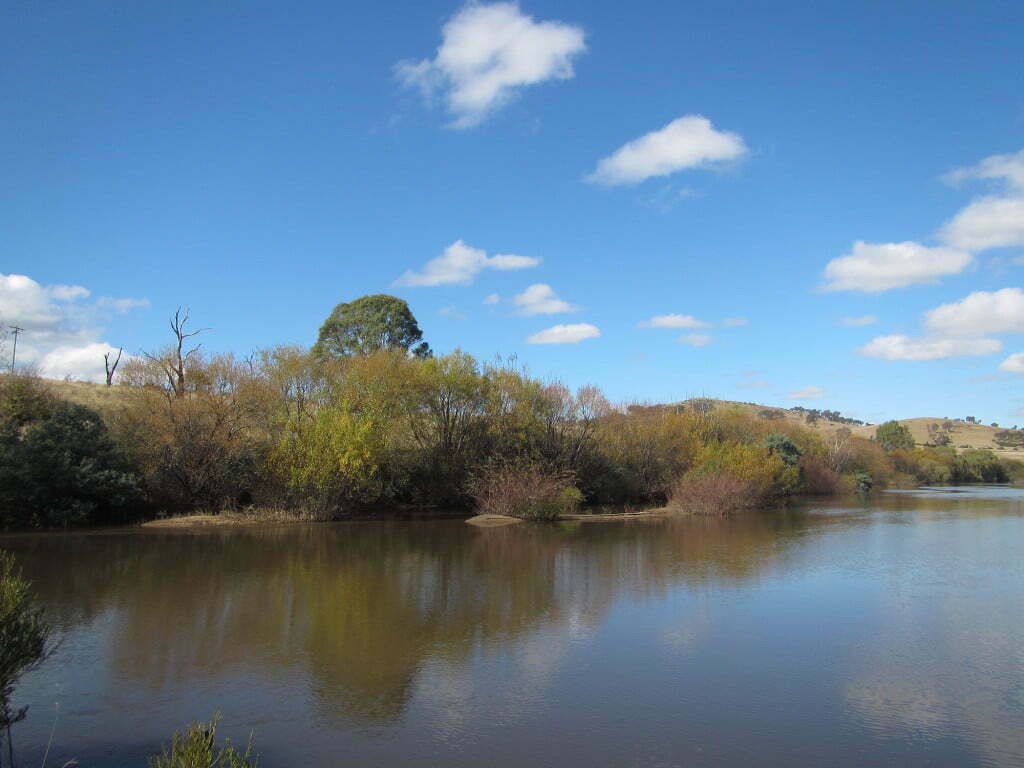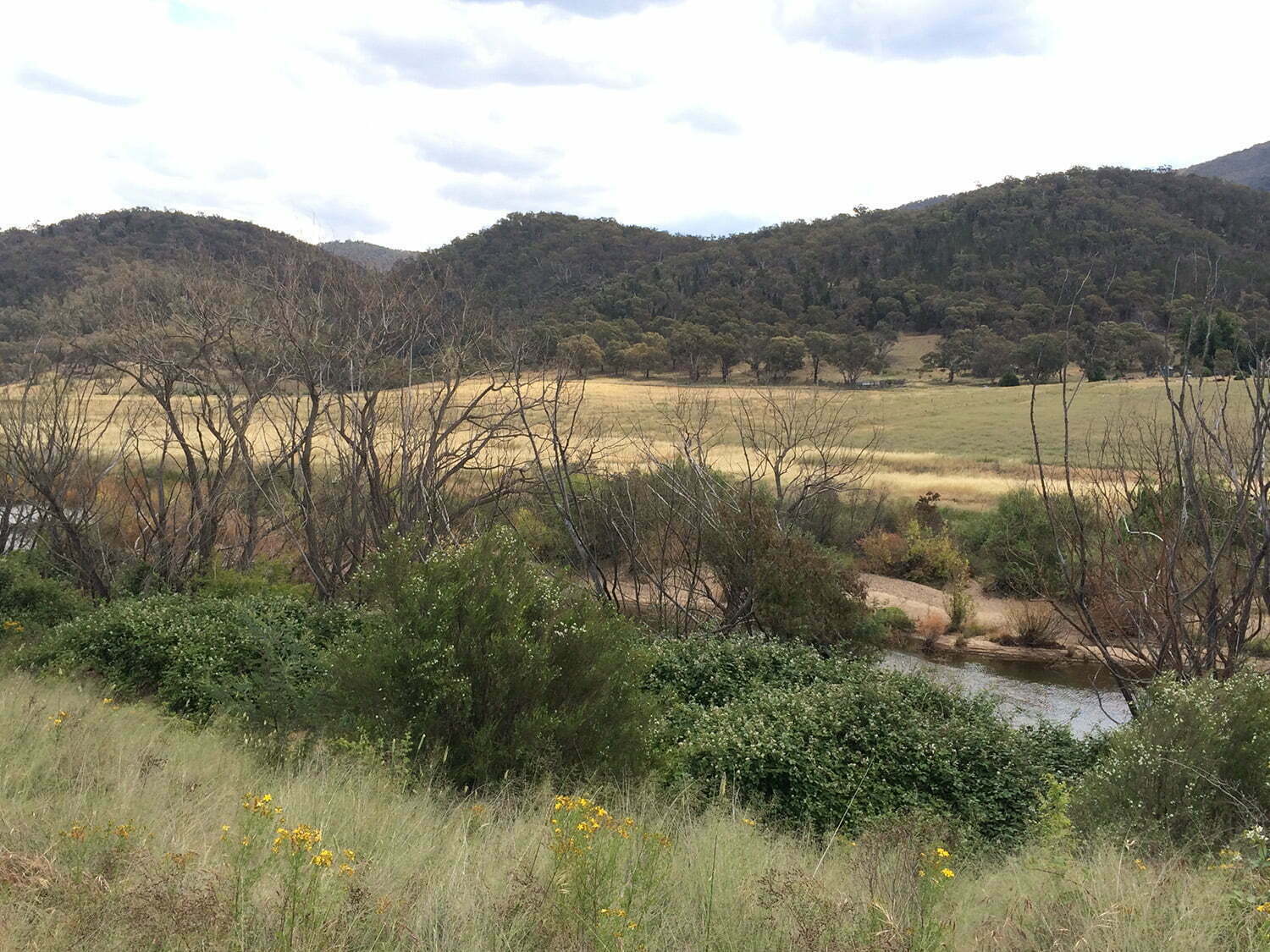Willow and blackberry works are in full swing along four kilometres of the Upper Murrumbidgee River through the Bumbalong valley. These works are the first steps of our two year project to build connectivity between the Bredbo and Colinton Gorges, and to help reduce in-channel sedimentation which prevents fish passage. Thanks to multi-partner funding, this project has been able to hit hard at riparian weeds in the first stage (including control of seeding willows found at Bumbalong) and then follow up with biodiverse plantings to restore native vegetation and connectivity.
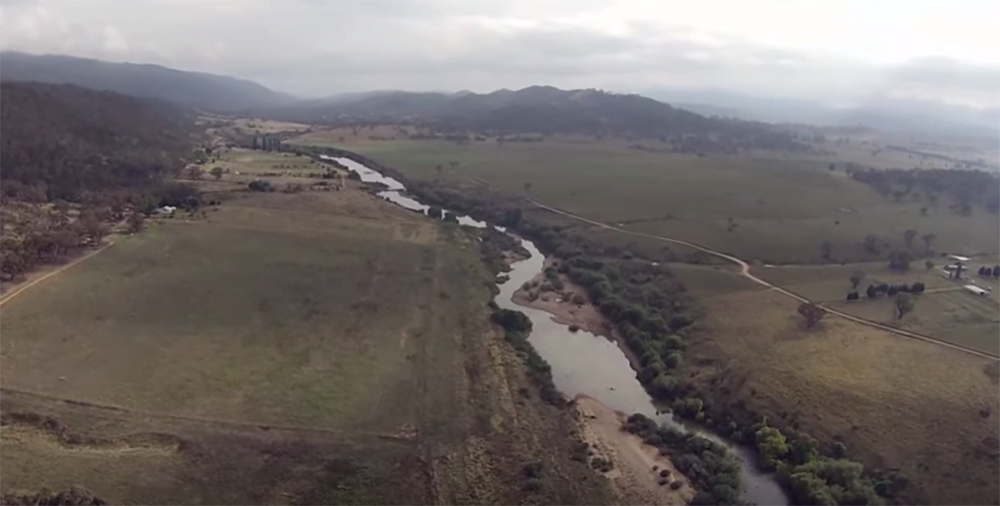
Aerial view of Bumbalong showing how open river corridor is the instream sedimentation and the willows colonising the river which on the left has been treated previously.
The ‘hitting hard at weeds’ part is crucial at Bumbalong. Historic landuse change has resulted in reduced connectivity of native vegetation in the riparian corridor and the spread of willows and blackberry. This includes instream, where willows are taking hold in sandbars deposited from gross sediment influx from upstream catchments.
The priorities for tackling weed infestations at Bumbalong include working systematically down from the upstream end of the valley to link up with works that have already been completed. So far, the top half of the project area has been treated for willows in two passes, one which controlled the large willows, followed by a foliar spray pass to mop up and control smaller willows (found instream). Willow removal is now scheduled for priority areas.
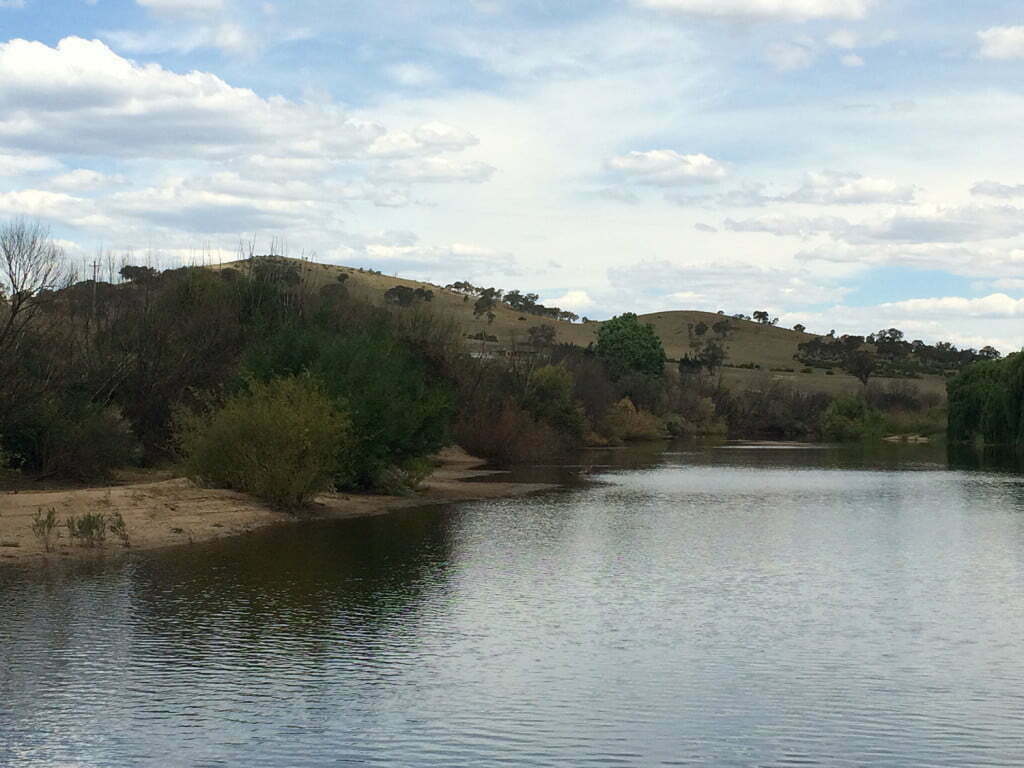
Willows at Bumbalong with large willows done and foliar pass just completed (young ones in process of dying).
Another priority for the project is staging the work so seasonal issues, logistics and follow up of weed control are accounted for. For example, the willow control was done first, because it is easier to access willows entangled in masses of green blackberry than to tangle with dead canes!
Blackberry is the next task on the agenda, and this scheduled for late summer. Landholders who wish to access blackberry funding sign a three year management agreement which requires them to follow up blackberry control within that period. This is essential, as the removal of the competitive canopy of willows along the river often favours blackberry.
The third priority for the project is to replace weeds with native vegetation so that biodiversity and alternative competition are restored. The first plantings kicked off this spring with several working bees at the top end of the valley.
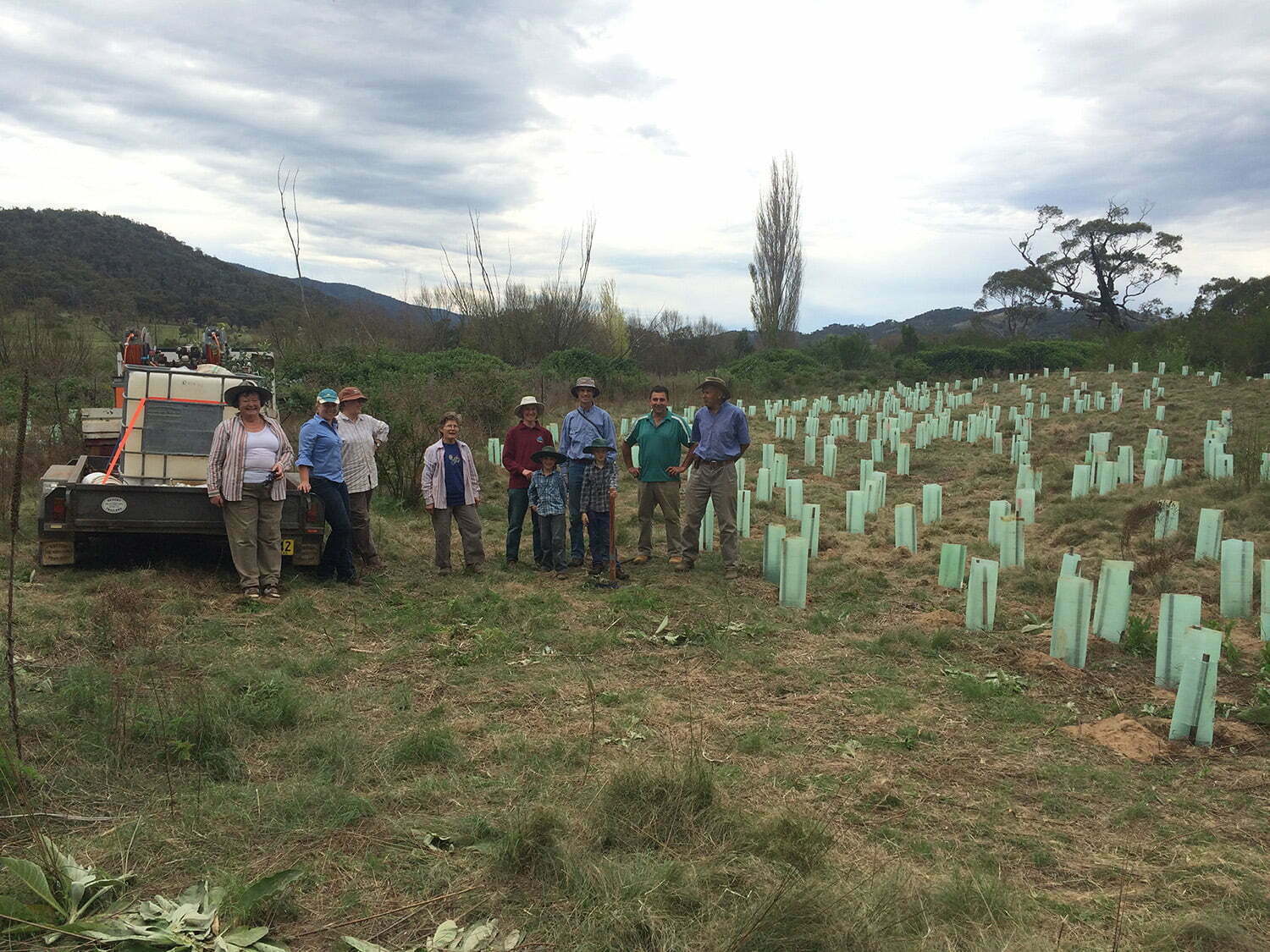
Volunteers at Bumbalong planting day replacing native vegetation in areas where currently mainly exotics exist. Scott Wilkinson who wrote one of our articles on the wet-dry tropics is in this photo with wife Leanne and two boys. Thanks guys!
Further revegetation projects are planned for autumn (2016/2017) and spring 2016, with a staggered planting season sharing the revegetation task. Plantings will include in-stream and riverbank plantings to hasten the colonisation of sandbars with native species.
For further information:
Antia Brademann – our On-ground Coordinator for Rivers of Carbon – Upper Bidgee Reach
facilitator@upperbidgeereach.org.au
